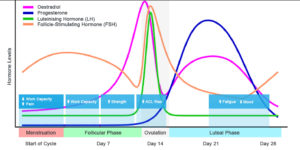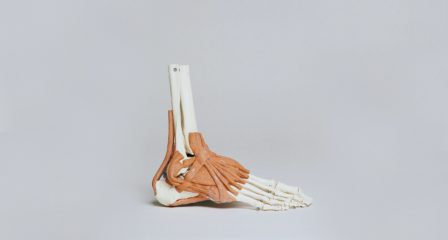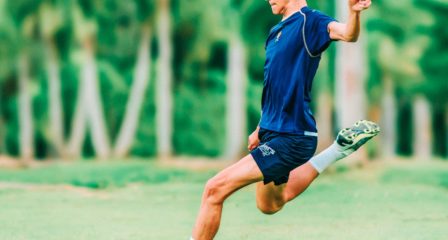While the physiology of females may lead to requiring tailored training approaches that differ from male counterparts, the topic of training and menstrual cycles has historically been disregarded. Fortunately, research is now starting to dive into female physiology and how we can use science to better guide our training choices and performance expectations.
A recent study revealed athletes experiencing a natural menstrual cycle reported physical symptoms inclusive of mood disturbances and reduced motivation to train at certain times of their monthly cycle (Meignié,2021), this can be largely attributed to fluctuations and differences in hormone levels between a woman’s follicular and luteal phases.
Another study also reported that 75% of elite athletes revealed that menstruation affected their performance (Martin, 2017 ). Interestingly, while some female athletes feel a decrease in their physical capacity at times during their menstrual cycle, Olympic Gold medals have been won by female athletes in all menstrual cycle phases (Fleck, 2004).
While the impact is different for everyone, regardless of whether you’re an elite athlete or a casual exerciser, hormonal shifts can present a real challenge when it comes to maintaining consistent training habits.
WHAT IS THE MENSTRUAL CYCLE?
The menstrual cycle is the monthly series of hormonal changes that a woman’s body experiences in preparation for the possibility of pregnancy. The menstrual cycle is counted from the first day of menses up until the first day of the next menses.
Assuming a typical 28-day cycle, we can break the menstrual cycle into 4 phases including:
- Menses: Typically lasts 3-7days, it is when a woman gets her period, estrogen and progesterone levels drop. Menstruation also kicks off the follicular phase.
- The follicular phase: Typically lasts 16 days, begins day 1 of a woman’s period and continues until ovulation. Follicle-stimulating hormone (FSH) is released by the pituitary gland.
- Ovulation: Typically lasts 3-4 days, Luteinising hormone is released in response to rising estrogen levels and ovulation typically occurs around day 14.
- The luteal phase: A rise in progesterone and a slight increase in estrogen levels occurs, followed by a drop in both hormones. This is where females may experience PMS symptoms. The cycle then restarts.

The follicular phase ( DAY 1-16 ) considerations:
During the menses the female athlete should consider that:
- Physical symptoms associated with menstruation may be experienced (ie. bloating, cramping and fatigue).
- That there may be increased inflammation during the first few days of menses
- There may be a greater requirement of iron.
- Due to the low levels of estrogen and progesterone, it CAN be an optimal time for peak performance if menstrual symptoms are managed.
During the early/mid follicular phase the female athlete should consider that due to lower levels of estrogen and progesterone:
- They may experience higher perceived pain tolerance and higher perceived energy levels.
- They may have an increased ability to utilise muscle glycogen.
- They may feel more motivated and experience high moods.
- That it may be a time to focus on high-intensity endurance and strength efforts.
- That it may be an optimal time for peak performance.
During the late follicular/ovulatory phase the female athlete should consider that due to a surge of estrogen that:
- There may be decreased stiffness of tendons and ligaments.
- There is an increased risk of both muscle and tendon injuries. In particular, ACL injuries.
The Luteal phase ( DAY 16-28) considerations:
During this phase, the female’s body is preparing for a possible pregnancy.
Due to the high levels of progesterone and estrogen during the Luteal phase the female athlete should consider that:
- Premenstrual syndrome may interfere with training and performance.
- Body mass may be higher due to water retention.
- Stored carbohydrates may not be as readily available, which means an increased appetite may be experienced.
- There may be a decrease in anabolic, or muscle-building capacity.
- Performance in heat and humidity can be more difficult during this phase due to an elevated core temperature and reduction in blood plasma volume.
The luteal phase is a time to take things easier, focusing on lower-intensity workouts and more recovery time. To best support this stage of the menstrual cycle the female athlete should pay more attention to fuelling their body and hydrating. It is also suggested that females should decrease their load and allow for more recovery time.
MINDSET:
Period on race-day? Don’t let the negative connotation of having your period affect your mindset. You may actually be primed for a great performance. Conversely, if you find yourself in the mid-luteal phase, you can easily feel like the cards are stacked against you. But you can still perform your best! The great thing is that you know what’s going on and can take pre-emptive action to mitigate any associated symptoms! As previously mentioned, elite athletes have achieved gold medal-winning performances at all stages of their menstrual cycles, knowledge is power, and therefore tracking the menstrual cycles is important!
TRACKING YOUR MENSTRUAL CYCLE:
So how do we know what menstrual cycle phase we’re in? Fortunately, there are many tracking apps out there on both Apple and Android devices. Some popular apps include:
- FitrWoman
- Flo
- Clue
Once you start to see patterns emerge in the app you choose, you can start to eat and train according to the phase you’re in.
Every woman has their own unique physiology so it is important to mention that a menstrual cycle can vary from 21-40 days. This means that the athlete with a 21-day cycle will have a shorter follicular phase than the athlete with a 40-day cycle. It may take a few months of tracking to come familiar with your own unique cycle!
MANAGING THE MENSTRUAL CYCLE WITH CONTRACEPTIVES:
Hormonal contraceptives are a method used by many women to alleviate symptoms associated with the menstrual cycle such as dysmenorrhoea (painful cramps) and menorrhagia (abnormal, heavy, or prolonged bleeding). Many athletes also use hormonal contraception to manipulate their cycles to coincide with training and competition schedules.
While the different types of hormonal contraception work slightly differently, in general, they work by regulating the production of hormones through the constant release of low doses of synthetic oestrogen and progesterone, in turn, preventing ovulation and essentially shutting down the menstrual cycle. Current research, however, isn’t consistent regarding the effects of this on performance.
A recent study reported that 50% of athletes use hormonal contraception that affects their menstrual cycle with 80% of the sample using oral contraceptives (Martin, 2017). While it is reported that contraceptive users like the regularity of the pill and knowing when they would experience their withdrawal bleed, many negative side effects have been reported including weight gain and mood disturbances (Martin, 2017). It should also be noted that a regular natural menstrual cycle that includes phases of high estrogen is associated with good bone health and better fertility outcomes.
The bottom line is that the area is vastly under-researched, and the choice of what is “best” for you, should be left to the individual.
TAKE HOME MESSAGE:
Hormonal fluctuations in the menstrual cycle are associated with athletic performance but there is high-individual variability between female athletes, which likens the need for cycle tracking and open communication between athlete, coach, and medical practitioners to ensure the best interests of the athlete.
If you’re an athlete with concerns about your menstrual cycle or want to discuss changes in your cycle. Make an appointment with your doctor, who will advise you on the steps you can take to address the issue.
Fleck, S., & Kraemer, W. (1990). Designing resistance training programs. Human Kinetics. Second Edition, pp. 193–197.
Martin, D., Sale, C., Cooper, S. B., & Elliott-Sale, K. J. (2017). Period Prevalence and Perceived Side Effects of Hormonal Contraceptive Use and the Menstrual Cycle in Elite Athletes. International Journal of Sports Physiology and Performance, pp. 1-22.
Meignié A, Duclos M, Carling C, Orhant E, Provost P, Toussaint J-F and Antero J (2021) The Effects of Menstrual Cycle Phase on Elite Athlete Performance: A Critical and Systematic Review.



